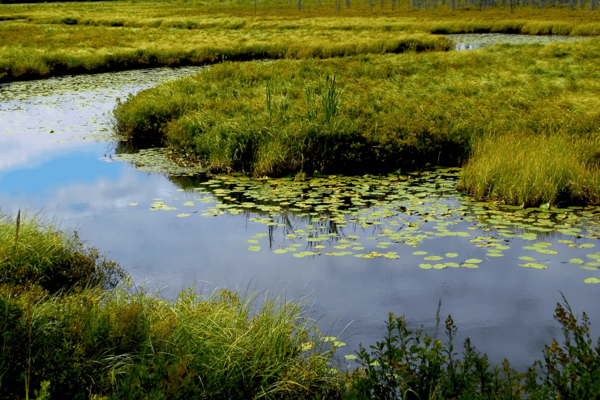
Utilizing AI for drought prediction
Waterloo co-op student applies machine learning methods to develop tools to forecast drought in Kenya

Waterloo co-op student applies machine learning methods to develop tools to forecast drought in Kenya
By Sarah Fullerton Faculty of ScienceRising temperatures and intensifying drought continue to worsen with the global climate crisis. According to the World Health Organization, an estimated 55 million people worldwide are affected by drought each year — a number expected to grow as climate change becomes more extreme.

Andrew Watford
Fourth-year Student
> Faculty of Science
Through the power of artificial intelligence (AI), Andrew Watford, a fourth-year Faculty of Science student at the University of Waterloo, is addressing this challenge by developing more accurate and interpretable tools for forecasting drought.
As part of his co-op term in the Mathematical Physics program and his stellar promise as a researcher in the field, Watford was afforded the opportunity to contribute to a peer-reviewed published study on the use of AI to analyze vegetation health and forecast drought patterns in Kenya. The paper compares the performance of a mechanistic model to two physics-informed machine learning approaches.
Watford’s role under the supervision of Drs. Chris Bauch (Faculty of Mathematics) and Madhur Anand (University of Guelph) involved writing code to predict the normalized difference vegetation index (NDVI) in drought-prone regions of Kenya. Through further refinement of these models, the research aims to enhance machine learning methods to improve drought prediction, which could lead to the development of early warning systems and mitigation strategies.
“Our goal was to bring together mathematics and machine learning to develop new methodologies and push the field forward to predict drought,” Watford says. “We are still far off from predicting drought five years in the future with certainty, but it’s a step towards trying to find the best way to do that.”
The ability to predict droughts earlier offers immense benefits, including enabling local governments to implement effective water management strategies, allowing farmers to select drought-resistant crops, and significantly enhancing natural disaster preparedness that could save lives.
In a time where climate change and natural disasters are becoming more prevalent, incorporating machine learning models to help mitigate these threats becomes increasingly important. Home to the largest co-op program at a research-intensive university, with more than 70 per cent of students gaining up to two years of employment experience during their studies, Watford credits the University of Waterloo for being able to apply his learning to this real-world problem.
“The research doesn’t end with being able to predict drought,” he says. “It is an evolving tool that will help people and save lives.”
A co-op stream of study is offered in most Science programs at the University of Waterloo. Learn more about the programs and opportunities available on the Science website or visit the Waterloo co-operative education website for more information.
Dynamical systems – inspired machine learning methods for drought prediction was published in Ecological Informatics, volume 84, in December 2024.

Read more
A Waterloo co-op student is using AI to assess the impact of land use on biodiversity with grasshopper song

Read more
Waterloo research is leading the fight against an invasive plant threatening Ontario wetlands

Read more
New Canada Research Chairs will tackle future-focused problems from social robots and intergroup attitudes to geochemistry and nanoscale devices
The University of Waterloo acknowledges that much of our work takes place on the traditional territory of the Neutral, Anishinaabeg, and Haudenosaunee peoples. Our main campus is situated on the Haldimand Tract, the land granted to the Six Nations that includes six miles on each side of the Grand River. Our active work toward reconciliation takes place across our campuses through research, learning, teaching, and community building, and is co-ordinated within the Office of Indigenous Relations.